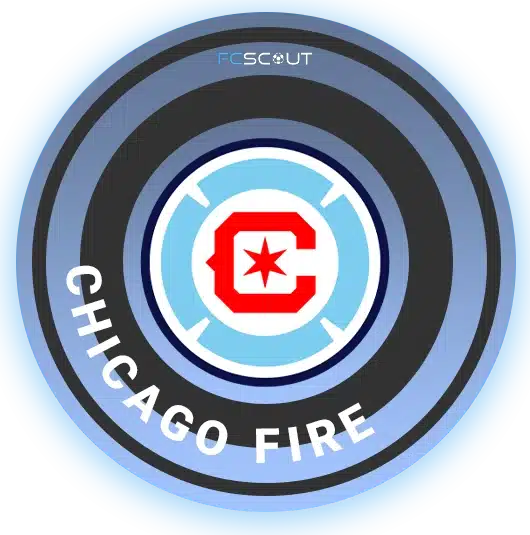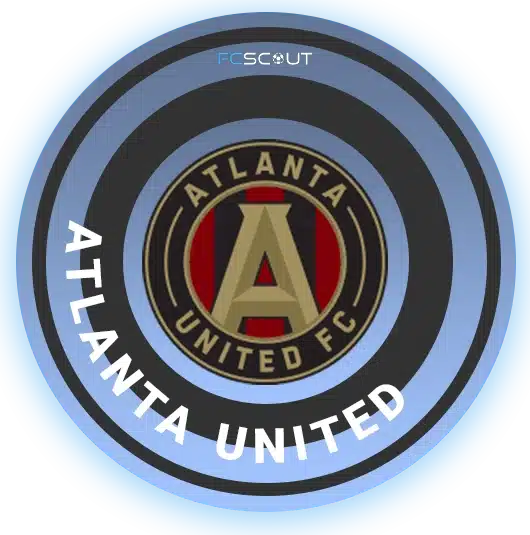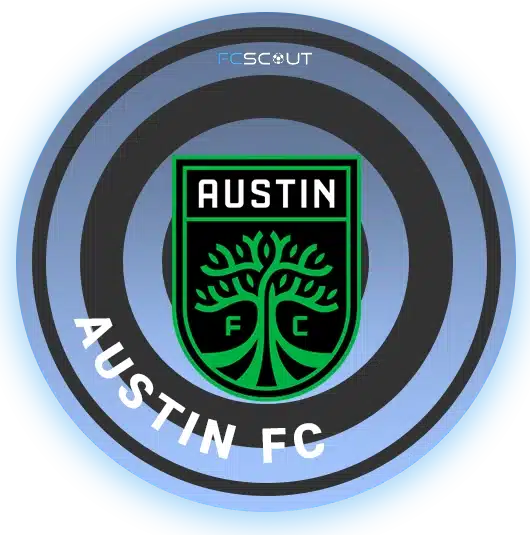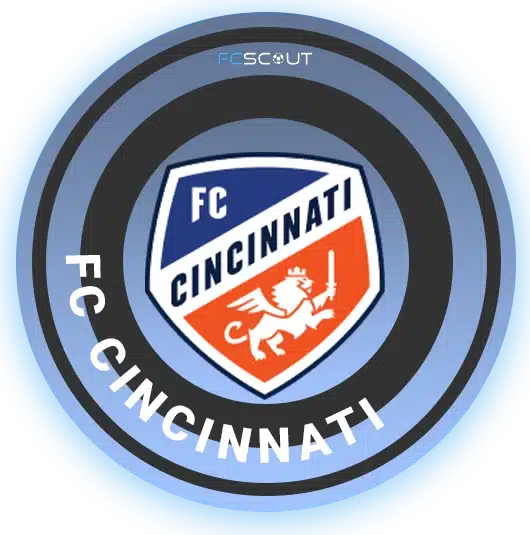CHICAGO FIRE CLUB GUIDE
History, Stadium, Players, and More!
Discover the world of soccer with fcscout.com, your go-to scout for club tryout information, club guides, player profiles, in-depth product reviews, and more.
1000+
team reviews of trending clubs
2M+
active users
annually
1000+
profiles in our player database
Explore
Chicago Fire
Chicago Fire Football Club is an American professional soccer franchise based in Chicago. The team competes in Major League Soccer (MLS) as a member of the league’s Eastern Conference.
Chicago Fire History
Early Days and Formation: The Chicago Fire Soccer Club was established on October 8, 1997, the 126th anniversary of the Great Chicago Fire, which is the event the team is named after. The club aimed to bring high-level soccer to the Chicago area and to become an integral part of the city’s rich sports culture. In their inaugural season in 1998, under the guidance of Polish coach Bob Bradley, the Fire achieved immediate success. They not only clinched the MLS Cup by defeating D.C. United but also won the U.S. Open Cup, completing an impressive double in their very first year.
Continued Success and Expansion: Building on their early success, the Fire continued to be competitive in the following years. They won additional U.S. Open Cup titles in 2000, 2003, and 2006, reinforcing their reputation as a formidable force in American soccer. The team also moved to a new home, Soldier Field, and later to Toyota Park (now known as SeatGeek Stadium) in Bridgeview, Illinois, in 2006. This move aimed to provide a soccer-specific stadium experience for their fans and help grow the sport in the suburban areas around Chicago.
Changes and Challenges: Despite a strong start, the mid-2000s to early 2010s saw periods of fluctuation for the Chicago Fire. The team underwent numerous coaching changes and roster overhauls, struggling to maintain the high standards set in their initial seasons. Playoff appearances became less frequent, and the team often found itself outside looking in during critical points of the season. However, the Fire’s passionate fan base, known as “Section 8,” continued to support the team fervently, creating one of the most vibrant atmospheres in the MLS.
Rebranding and Controversy: In 2019, the Chicago Fire announced a major rebranding effort, which included changes to the team’s logo and overall brand identity. This move was met with mixed reactions from the fan base and the broader soccer community. Additionally, the team announced a return to Soldier Field, aiming to reconnect with the city’s core and increase accessibility for fans. These changes marked a new chapter for the club, seeking to revitalize its presence and performance in MLS.
Recent Years and Developments: In the recent years leading up to 2023, the Chicago Fire have been in a rebuilding phase, focusing on acquiring new talent and enhancing their development academy. They have aimed to return to the principles that brought them early success, including fostering a strong team spirit and a deep connection with the local community. Despite the challenges, there are positive signs of growth and a rekindling of the competitive spirit that characterized the club’s early days.
Current Status: As of the latest information available, the Chicago Fire continues to compete in MLS with the goal of returning to their former glory. The team is actively working to strengthen its roster, improve its youth development programs, and enhance fan engagement. While recent seasons may not have lived up to the highest expectations, the Fire remains a team with a proud history and a bright future in American soccer.
The Chicago Fire’s journey from a successful inaugural season to the challenges and changes of recent years reflects the dynamic nature of MLS and American soccer as a whole. As the club moves forward, it carries the spirit and resilience of the city it represents, always striving to ignite passion and excitement in the hearts of its fans.
Chicago Fire FC Youth Development System
Player Pathways
The player pathway below represents the opportunities that both male and female players have when participating in one or more of the programs offered by Chicago Fire Football Club.

The pathway does not represent every players journey towards reaching their playing potential in the game, but serves as a reminder of the opportunities that are available to players.
For many, players will ‘skip’ a level of participation as they work towards their goals. As an example, many Fire Juniors players do not play at the academy or ECNL level but end up playing in college.
Grassroots Camps and Clinics
- Chicago Fire Kids Club is free to join for children 12-and-under. Please complete this form to register your children for Kids Club.
- Little Sparks Program is the Chicago Fire’s introduction to soccer program where children and parents can take their first steps in soccer together. Specifically designed for children aged 2 to 5 years old and using the fun of play and imaginative stories, Little Sparks facilitates a child’s physical, mental, social and emotional development through the game of soccer. For more information on this program, click here.
- Chicago Fire FC Camp Programs are the only programs in the Midwest that are operated by a professional football club. All programs will follow a curriculum specifically designed by football experts to meet the needs of youth football players of all ages and abilities. For more information, click here.
Fire Juniors
The Fire Juniors is the official affiliate program of the Chicago Fire Football Club, currently consisting of 8 clubs nationwide and more than 5,700 travel players and 5,000 recreational players. Each club receives the the support of the Fire’s professional club structure while maintaining a local focus that meets the needs of all youth players in the community.
Emerging Talent Program
The Emerging Talent Program (ETP) is the National ID Program of the Fire Juniors. ETP is defined by a series of player and team development initiatives designed to meet the attitudes, desires, and aspirations of today’s top talent across the entire Fire Juniors network.
How are Fire Juniors selected?
Prior to each Spring season, the clubs and their directors/coaches will submit player nominations for the upcoming Residential ID Camp. All nominations are based on a players technical ability and current commitment to their regular club programming.
Post-camp, Fire Juniors players are then selected to create Fire Juniors Elite Teams who come together and participate in a national-level showcase.
The International Tour is for 11U-14U players and is primarily offered to those players who attended the Residential ID Camp. This is an open invitation.
Fire Juniors Elite Teams
After attending the Residential ID Camp, a roster of players are selected to the Fire Juniors Elite Teams to attend an high level tournament. Boys and Girls teams are created from the 12U-14U groups that attended the Residential ID Camp. Some of the benefits of participating include;
- Opportunity to play with the best players in the Fire Juniors network;
- Compete with other players from across the Midwest
- Head coaches are current club directors and high-level club coaches from within the network.
Fire Academy
Chicago Fire FC has academy teams for boys U13, U14, U15, U17, and U19. Their long term vision is for the academy to become the soul of the club – the place where the values of Chicago football are redefined and expressed through their young players.
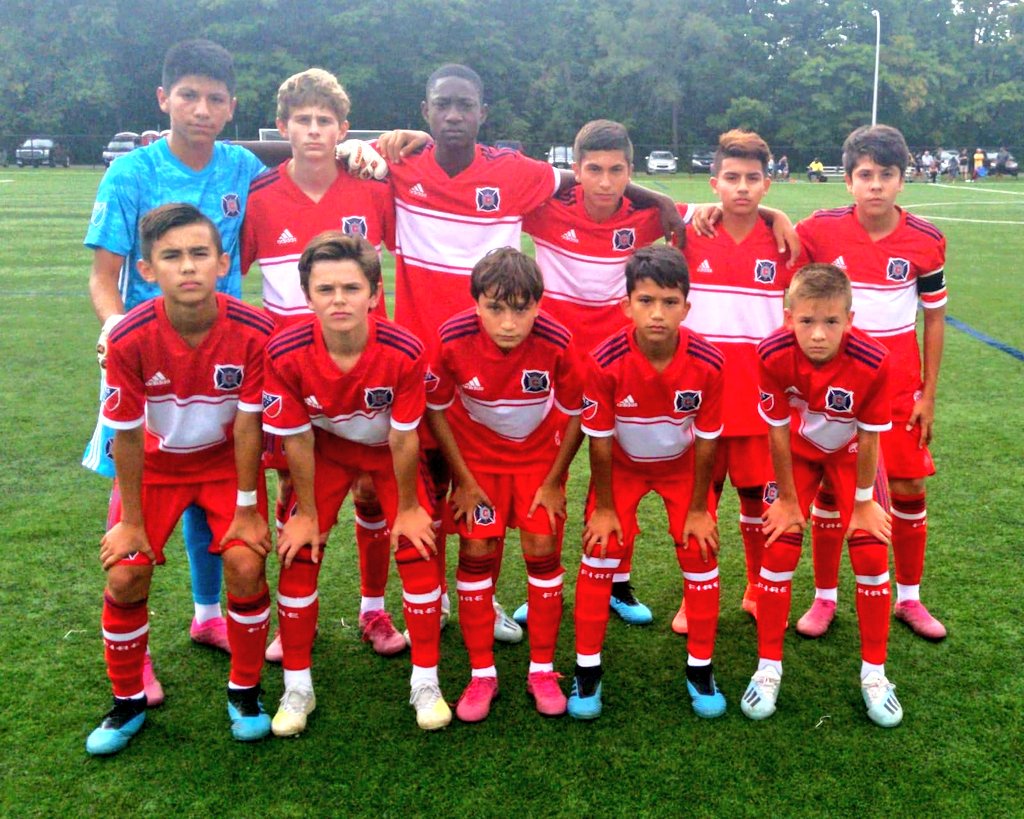
Consideration for the academy comes via a few of ways:
- A personal invitation from a Chicago Fire Football Academy scout;
- Complete a ‘player identification’ application to be observed and/or to attend a trial or ID Event (see the web form below);
- Participation in a Chicago Fire Juniors program nationwide;
- Participation in other Chicago Fire Youth Development camps and/or clinics.
If you are interested in being observed by a Chicago Fire Football Academy Scout and/or would like to apply for a player trial please complete the form by clicking here.
Indiana Fire Juniors
The Indiana Fire Juniors is the official youth affiliate of the Chicago Fire FC. It is also one of the largest, most comprehensive soccer clubs in the area. Whether you’re a 4-year-old who’s learning to kick, a 12-year-old who wants to master his skills, a high school junior who wants to play in college or an adult who still loves to play the game, the Indiana Fire Juniors has a place for you. To learn more about this program, you can click here.

Chicago Fire Football Club is an American professional soccer franchise based in Chicago, Illinois. The team competes in Major League Soccer (MLS) as a member of the league’s Eastern Conference, having moved to the conference in 2002.
The franchise is named after the Great Chicago Fire of 1871, and was founded as the Chicago Fire Soccer Club on October 8, 1997, the event’s 126th anniversary. The team began play in 1998 as one of the league’s first expansion teams. The Fire won the MLS Cup as well as the U.S. Open Cup (the “double”) in their first season in 1998. They also won U.S. Open Cups in 2000, 2003, and 2006, in addition to the 2003 MLS Supporters’ Shield. In 2015, the club won the first ever MLS Wooden Spoon, and repeated the feat in 2016.
The Fire maintains an extensive development system, consisting of the Chicago Fire Development Academy and the Chicago Fire Juniors youth organization. They also operate the Chicago Fire Foundation, the team’s community-based charitable division. The Fire’s home stadium is Soldier Field.
Chicago Fire Player Identification
Being a member of the Chicago Fire Football Academy is a privilege, one that is earned by being considered an exceptional talent and one that is kept by being a good person. Consideration for the academy comes via a few of ways:
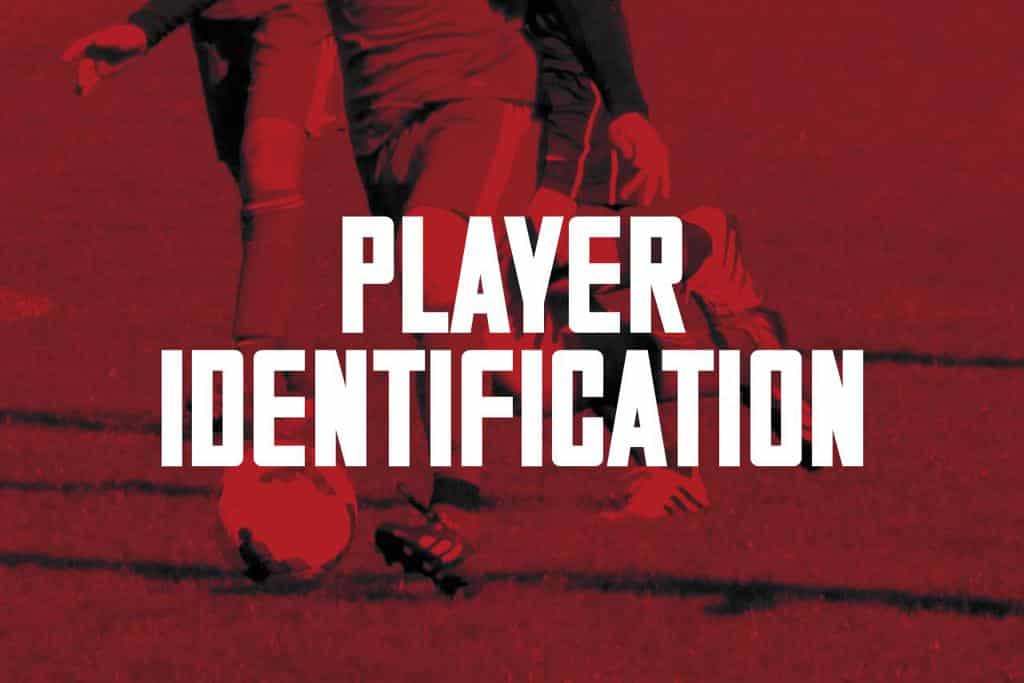
- A personal invitation from a Chicago Fire Football Academy scout;
- Complete a ‘player identification’ application to be observed and/or to attend a trial or ID Event (see the web form below);
- Participation in a Chicago Fire Juniors program nationwide;
- Participation in other Chicago Fire Youth Development camps and/or clinics.
Click here for the Player Trial Application form. If you are interested in being observed by a Chicago Fire Football Academy Scout, please complete the player by clicking on the link.
NEXT STEPS-
1) Technical staff will review your submitted application;
2) If interested, the club will contact you and invite you to a player trial at SeatGeek Stadium in Bridgeview.
3) Some factors technical staff consider when inviting players:
-Playing Position
-Playing Experience at high level
-Existing team needs
**PLEASE NOTE THE TECHNICAL STAFF DECISION IS FINAL AND WILL CONTACT YOU IF INTERESTED**
CHICAGO FIRE ACADEMY PROGRAM DETAILS
What?
The Chicago Fire Football Academy is a youth Academy program operated by Chicago Fire Football Club.
Where?
Games and training sessions take place at the Chicago Fire Football Academy Training Facility at SeatGeek Stadium (Bridgeview, Ill.)
Who?
There are four groups of players participating in the Academy program and they include U13, U14, U15 and U17. These team participate in the MLS NEXT competition.
Chicago Fire FC Recruitment Trials
Click here to access player application form. (Link inactive – Updated March 2024)
CREATE A FREE RECRUITMENT PROFILE
Click the ‘LEARN MORE’ button below to take your career to the next level and create a fcscout.com recruitment portfolio to help clubs, coaches, agents, and scouts easily find you. For a limited time, we are offering this service for free!
Chicago Fire Colors & Badge
The Chicago Fire’s team colors have traditionally been red, white, and navy blue. These colors are a nod to the traditional symbolism of fire and rescue services, as well as to the city of Chicago itself. Red, representing fire and passion, is the most prominent color and is often used in the team’s primary jerseys. White and navy blue serve as complementary colors, adding contrast and depth to the team’s apparel and branding.
The badge of the Chicago Fire has undergone several changes throughout the team’s history. Originally, the badge featured a stylized “C” with a flame motif, symbolizing the Great Chicago Fire of 1871 and the city’s subsequent rebirth and resilience. The design was meant to pay homage to Chicago’s history and the spirit of renewal.
However, in late 2019, the Chicago Fire announced a significant rebranding, which included a new badge design. This new badge moved away from the traditional symbolism and introduced a more modern aesthetic. It featured geometric shapes and a new color scheme, aiming to represent a more contemporary look for the club. The redesign, however, received mixed reactions from fans and the public.
Chicago Fire Kit
The Chicago Fire’s kit, like those of many soccer teams, changes designs and details from season to season, but typically adheres to the club’s traditional color scheme of red, white, and navy blue. Here’s a general outline of what the kits usually involve:
Home Kit: The home kit traditionally features a predominantly red design, reflecting the team’s primary color and its association with fire and energy. This kit often includes white and navy blue accents, such as stripes, trim, or other graphic elements, to complement the main color. The design aims to embody the spirit and history of the club while maintaining a modern and stylish appearance.
Away Kit: The away kit usually contrasts with the home kit, often featuring a predominantly white or light color palette with red and navy blue details. This kit is designed to stand out during away matches and often includes unique design elements or patterns that differentiate it from the home kit.
Third Kit/Alternate Kit: In some seasons, the Chicago Fire may also release a third or alternate kit. This kit typically offers a departure from the traditional colors or introduces different design elements, providing variety and a fresh look. The third kit can vary widely in color and style, depending on the club’s and the kit manufacturer’s creative direction for the season.
Goalkeeper Kit: Goalkeeper kits are generally distinct from the outfield players’ kits, often featuring unique colors and patterns. These kits are designed to make the goalkeeper stand out on the field, both for practical reasons (to distinguish them from other players) and stylistic ones.
The kits also feature the club’s badge, the kit manufacturer’s logo, and the sponsor’s logo, adhering to the standard layout seen in professional soccer. Over the years, kit manufacturers and sponsors may change, which can also influence the design and features of the kits.
Chicago Fire Club Culture
The club culture of the Chicago Fire Soccer Club is deeply rooted in the city’s rich history, diverse communities, and passionate sports fan base. The culture embodies the spirit of resilience, community, and dedication, reflecting the city’s own story of rebirth and strength following the Great Chicago Fire of 1871. Here’s a closer look at the various aspects of the club’s culture:
Fan Base and Supporter Groups: One of the most vibrant aspects of the Chicago Fire’s club culture is its dedicated fan base, particularly the supporter groups such as Section 8 Chicago. Section 8 is known for its energetic and unwavering support, representing a diverse cross-section of Chicago’s population. These fans create a lively atmosphere at games with chants, songs, and colorful displays. The supporter culture fosters a sense of community and belonging, uniting fans from various backgrounds in their shared love for the team.
Community Engagement: The Chicago Fire is committed to engaging with the local community through various programs and initiatives. The club focuses on youth development, education, and community service, aiming to use soccer as a tool for positive social impact. This commitment to community involvement helps to strengthen the bond between the club and its supporters, building a foundation of mutual respect and shared values.
Traditions and Rivalries: Traditions play a significant role in the culture of the Chicago Fire. From pre-game rituals to post-match celebrations, these traditions help to build a sense of identity and continuity among fans. Rivalries with other MLS teams, such as the Chicago Fire’s matches against the New England Revolution and Columbus Crew, also contribute to the club’s culture by fostering a competitive spirit and enhancing the excitement around games.
Cultural Diversity: Reflecting the diverse fabric of Chicago, the club embraces cultural diversity within its fan base and organization. This diversity is celebrated through international theme nights, multicultural community outreach programs, and the inclusion of players from around the world. This approach not only enriches the club culture but also helps to connect with different segments of the city’s population.
Brand and Identity: The club’s brand and identity, including its colors, badge, and mascots, play a key role in shaping its culture. These elements are symbols of the club’s history, values, and aspirations, providing fans with a sense of pride and belonging. Even as the club has undergone rebranding efforts, the core values and spirit remain central to its identity.
Stadium Atmosphere: The matchday experience at SeatGeek Stadium (and previously at Soldier Field) is a crucial part of the club culture. The stadium atmosphere is charged with energy, with fans creating an intimidating environment for visiting teams. Tailgating, chanting, and cheering are all part of the matchday tradition, making Chicago Fire games memorable experiences for both fans and players.
Overall, the culture of the Chicago Fire Soccer Club is a reflection of its community: diverse, resilient, and passionate. Despite the ups and downs on the field, the club’s culture remains a source of unity and pride for its supporters.
The Chicago Fire’s home city, Chicago, Illinois, is an integral part of the club’s identity and culture. Chicago is the third-largest city in the United States and is known for its rich history, diverse population, vibrant cultural scene, and passionate sports fandom. Here’s how Chicago influences the club and its culture:
Cultural Diversity: Chicago is a melting pot of cultures, which is reflected in the fan base and the atmosphere at Chicago Fire games. Supporters from various backgrounds come together to celebrate their love for soccer, contributing to a multicultural and inclusive environment. This diversity is also seen in the range of fan groups and supporters’ clubs associated with the team, each bringing their unique traditions and chants to match days.
Sports Tradition: Chicago is a city with a deep-seated love for sports, home to historic teams like the Cubs, the Bears, the Bulls, and the Blackhawks. This strong sports culture feeds into the passion and loyalty seen in Chicago Fire fans. The city’s history of sporting success and resilience influences the club’s ethos and the expectations of its supporters.
Community Engagement: The club engages with the local community through various initiatives and programs aimed at promoting soccer, supporting youth development, and addressing social issues. The Chicago Fire Foundation, the charitable arm of the club, plays a significant role in this, focusing on health, education, and soccer programs for underserved communities in the Chicago area.
Stadium Atmosphere: The Chicago Fire’s return to Soldier Field, a historic and iconic venue in the heart of the city, has reinforced the connection between the club and its urban roots. The stadium’s location offers fans easy access and the opportunity to enjoy the city’s skyline and lakefront as part of their matchday experience.
Rivalries: Regional rivalries add to the club’s culture and fan experience. Matches against nearby MLS teams, like Columbus Crew and FC Cincinnati, are highly anticipated and add an extra layer of excitement and engagement for fans, enhancing the local and regional soccer culture.
Global Influence with Local Roots: While embracing players and influences from around the globe, the Chicago Fire also focuses on developing local talent and maintaining a connection to Chicago’s soccer community. This blend of international and local elements helps shape a unique club culture that reflects the city’s global connections and its strong local identity.
Overall, the city of Chicago plays a crucial role in defining the identity and culture of the Chicago Fire, influencing everything from the team’s fan base to its community initiatives and matchday experiences. The club’s history and future are deeply intertwined with the city’s, making the relationship between the team and its home city a pivotal aspect of its overall culture.
Explore More Clubs
CREATE A FREE RECRUITMENT PROFILE
Click the ‘LEARN MORE’ button below to take your career to the next level and create a fcscout.com recruitment portfolio to help clubs, coaches, agents, and scouts easily find you. For a limited time, we are offering this service for free!

